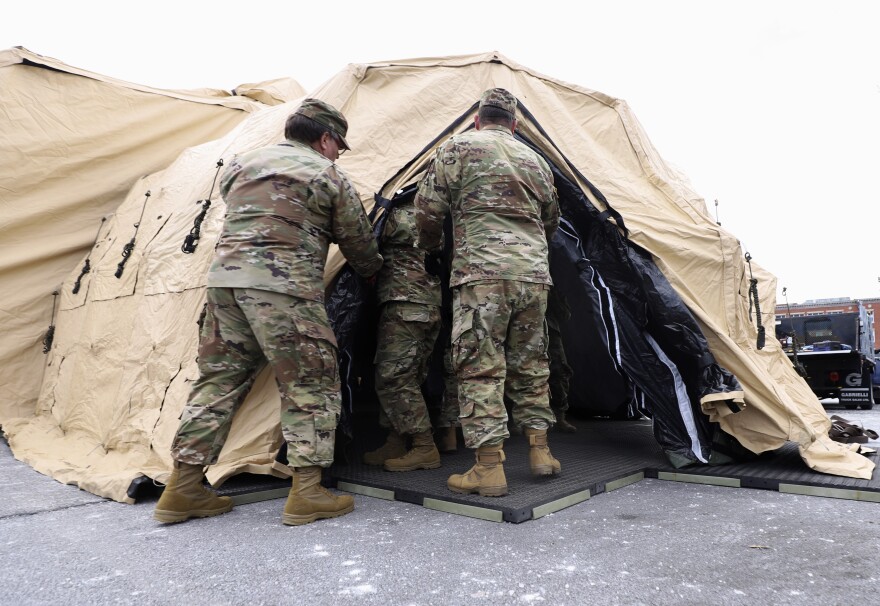Hospitals in Connecticut have collaborated on a level not seen in generations in order to fight COVID-19. They built more than enough hospital beds to prepare for the worst case scenario.
Connecticut began to work with its largest health systems on day one of the state’s emergency declaration back in March. By April, regulations were lifted to allow for expanded bed capacity, and manufacturers in the state were given guidelines to produce much-needed hand sanitizer, and medical and personal protective equipment.
The state, with help from the Connecticut National Guard, went into overdrive to build temporary hospitals and beds to meet anticipated demand in hard-hit communities.
“You have to plan for the worst case scenario and hope that it doesn't happen. And that, that's what the state did. If we did not have those available beds, we would probably have a much higher impact in the state,” says Vicki Veltri, executive director of the state’s Office of Health Strategy.
Data from the state Department of Public Health and the National Guard show Connecticut prepared for over 2,000 additional hospital beds. Most were in Fairfield, New Haven and Hartford Counties where there were the most number of COVID-19 patients.
But even on the worst day, the number of hospitalizations per county never came close to hospital capacity. So, was Connecticut overprepared?
“But had we not done that, there would have been the question, right? There would have been questions why the state did not plan for this surge capacity,” Veltri says.
Some hospitals worked for weeks in worst case scenario mode.
By last week, Yale New Haven Health had discharged over 1,000 COVID-19 patients from its five hospitals. Its Greenwich Hospital near the New York border had treated more than 100 patients, most of whom were from Westchester County. And much of the hospital's staff had tested positive for the virus.
“We saw it sweeping up from New York into lower Fairfield County and then across the rest of the state. You know, as we're getting ready, I think there was a sense of anxiety,” says Dr. Thomas Balcezak, chief medical officer at Yale New Haven.
So, they shared patients with nearby hospitals to lighten the load. Paul Kidwell says that happens between hospitals to open bed space and share resources. He’s senior vice president of policy at the Connecticut Hospital Association.
“What the hospitals did in Fairfield County was create a sort of unique community where they were each talking to each other around what the daily need was, supply and availability.”
The construction of temporary hospital space, worth hundreds of millions of dollars, opened the door for hospitals to manage patients with milder symptoms who didn’t need acute care.

The National Guard says so far the only surge space they’ve built that has any patients is Stamford Hospital, though Hartford Hospital inquired about space at the Connecticut Convention Center.
“It’s better to have something built than to try and create it after the need is already there and it’s already too late,” says David Pytlik, spokesperson for the Connecticut National Guard.
And Pytlik says unprecedented times call for this level of buildup.
“Crisis never quite happens how it’s planned. There’s always some unique flavor or aspect of this. With this particular pandemic, it was how quickly it spread, just the transmissibility of it...it's unprecedented for our generation, is what I keep reminding people.”
Healthcare strategists say the buildup of hospital bed capacity was not a knee-jerk reaction to the state of emergency.
Kidwell says it was about staying ahead of the curve and preparing for future waves of infection: preparation is an effort that doesn’t really stop.
“As we return in some way to ‘normalcy,’ we’ll have to be both vigilant about what we’re seeing and I think all this preparation will have helped us if in fact we see another uptick in the spread at some point in the future.”
The consensus among health administrators is it’s better to be safe than sorry.



